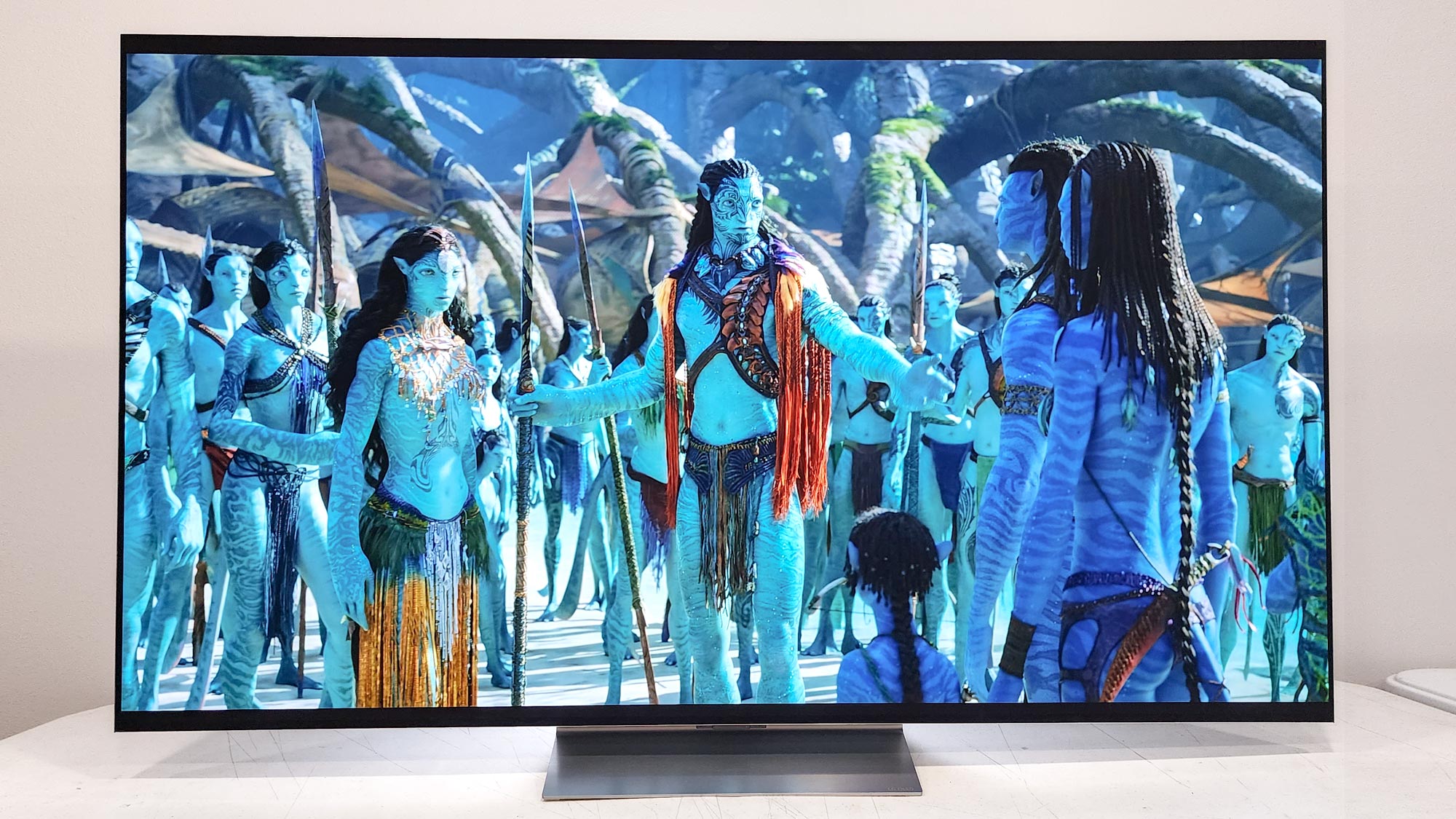Plasmonic PHOLED is the next big thing in OLED TVs — what you need to know
Plasmonic PHOLED from UDC could improve OLED lifespan by ‘10 times’

When it comes to the best TVs you’re typically picking between OLED TVs and LED TVs, which are making a strong case for contention thanks to new QLED and MiniLED display panels with insane brightness. But for now, it’s still OLED displays that top our list.
This battle for producing the best TV means that OLED and LED manufacturers need to work on new technologies. I recently sat down with Universal Display (UDC) Vice President Dr. Michael Hack and we got into a wide-ranging discussion about OLED displays and future technological advancements. We started discussing UDC’s role in the growing foldable and rollable display market, which OLED is well suited for thanks to its natural flexibility, and then we got into new technologies like PHOLED, which could improve power efficiency in OLED displays by a significant margin.
But then we discussed something I had never come across before — plasmonic PHOLED. Dr. Hack describes this as a “novel device” that could double OLED efficiency and even improve the lifespan of OLED displays by “even up to 10 times the lifetime of current devices.”
How plasmonic PHOLED works
Dr. Hack couldn’t get into too many details on plasmonic PHOLED, as the technology is very much still in the research and development stage. Like with PHOLED, plasmonic PHOLED uses phosphorescent red, green and blue PHOLED subpixels to produce images on the OLED display.
"UDC is working on this novel device called a plasmonic PHOLED, which is an exciting R&D area that could perhaps double the OLED efficiency over the years."
Dr. Michael Hack, UDC
However, according to Dr. Hack, in UDC’s efforts to make plasmonic PHOLED work, they have “fundamentally changed the OLED device design.” This not only makes the OLED display more efficient but boosts its lifespan as well because of “new physics that actually control what causes an OLED to degrade.”
After our conversation, I found a paper published by some of Dr. Hack’s colleagues from UDC in Journal of Materials Chemistry C last year and did a bit more research into how this novel OLED technology works. What I gathered from this paper is that the benefits of plasmonic PHOLED come from improvements in how light is emitted through the gap within the OLED subpixel stack. It’s incredibly technical and not fully refined yet, but in essence, Dr. Hack summed it up when he stated that the changes UDC has made in the physics of the OLED itself are what causes the boost in efficiency provided by plasmonic PHOLED technology.
Plasmonic PHOLED vs. MicroLED: The next great display tech battle

While UDC is working on pushing OLED forward with PHOLED and plasmonic PHOLED, its competitors in LED display technology are working on their own new next big thing — MicroLED.
Sign up to get the BEST of Tom's Guide direct to your inbox.
Get instant access to breaking news, the hottest reviews, great deals and helpful tips.
However, Dr. Hack didn’t seem too concerned about MicroLED in our conversation. For starters, he highlighted two major problems with MicroLED: yield and efficiency. MicroLEDs are made up of numerous subpixels, or as Dr. Hack puts it “a display could be 10 million, or more than 10 million subpixels.” And you have to lay them onto the MicroLED display with essentially perfect accuracy.
This greatly reduces the yield and is difficult to do at low cost, which Hack describes as a “manufacturing challenge” that is still being addressed. It’s also why you’re only starting to see MicroLED TVs dropping in price — though they still regularly cost over $100,000.
The second issue that Dr. Hack brought up is that the smaller the LED size, the more the efficiency of the LED drops. To put it in perspective, Dr. Hack says, “At the moment, if you were to build a MicroLED display, it would consume a lot more power than an equivalent Micro OLED display.” Micro OLED, of course, is most notable for being the display technology used in the new Apple Vision Pro headset but isn’t really being used for TV displays the way MicroLED is.
Besides these constraints, Dr. Hack also points out that OLED itself is “a moving target,” meaning that even as MicroLED works out the kinks, UDC and others will be improving the OLED displays MicroLED is competing against. All of these points echo other recent comments where he said OLED will remain the best display technology for “the next 10 years.” Hopefully, plasmonic PHOLED will be a part of that potential 10-year reign of dominance.
More from Tom's Guide

Malcolm has been with Tom's Guide since 2022, and has been covering the latest in streaming shows and movies since 2023. He's not one to shy away from a hot take, including that "John Wick" is one of the four greatest films ever made.
